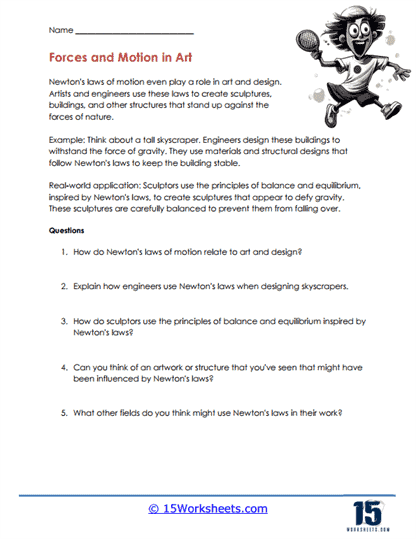Forces and Motion in Art

Worksheet Description
The worksheet explores the intriguing interplay between Newton’s laws of motion and the realms of art and design. It underscores how artists and engineers harness these fundamental physics principles to create sculptures, buildings, and various structures that counteract nature’s forces. By offering examples like the intricate design of skyscrapers or the meticulous balance of sculptures, the content illustrates how these creations, though artistic, are deeply rooted in scientific understanding. The worksheet emphasizes the idea that art and science, while seemingly disparate, often converge in the real world to produce marvels of design and creativity.
To adeptly intertwine Newton’s laws with art and design, one begins by understanding the foundational physics principles. With this knowledge, an artist or engineer can then apply these laws in their creations, ensuring stability, balance, and durability. For instance, an engineer designing a skyscraper would employ structural designs that distribute forces appropriately, ensuring the building’s stability. Similarly, an artist creating a sculpture would need to consider the principles of balance and equilibrium, ensuring that the art piece remains upright and resists toppling.
The worksheet seeks to enlighten students on the symbiotic relationship between physics and art. It aims to showcase that the boundaries of science and creativity are fluid, with one often enhancing the other. Through real-world applications, students are prompted to recognize that the structures and artworks they encounter daily are not just feats of creativity but also of scientific mastery. Ultimately, the material aspires to foster an appreciation for the interdisciplinary nature of knowledge and inspire curiosity about how other fields might also be intertwined with fundamental scientific principles.
